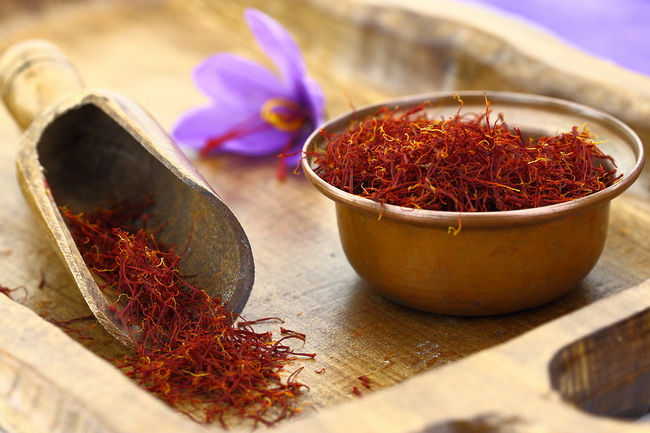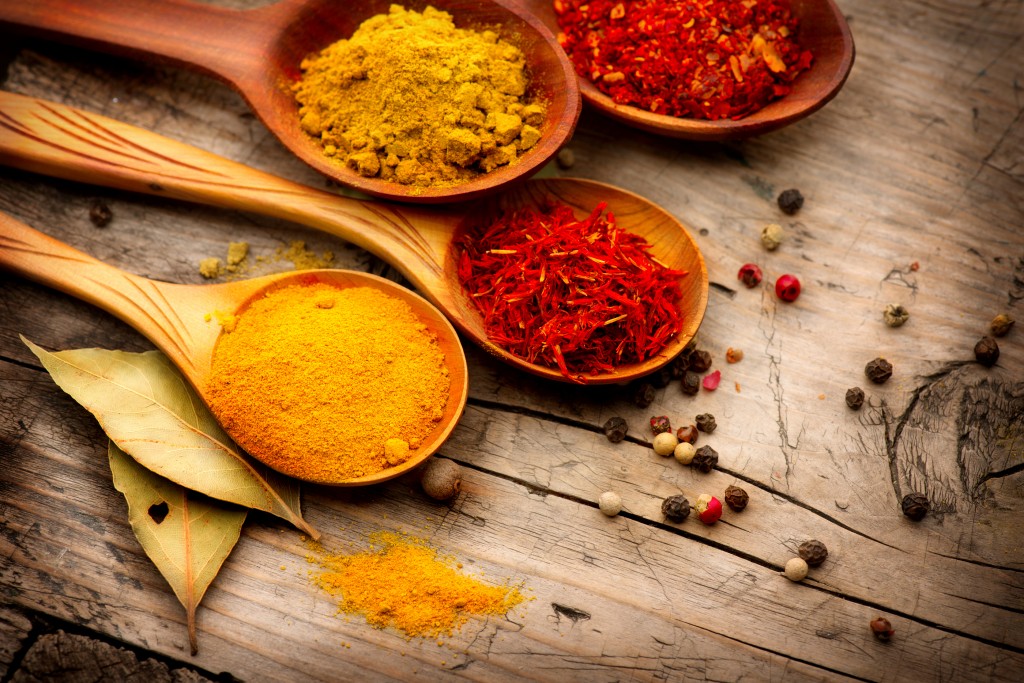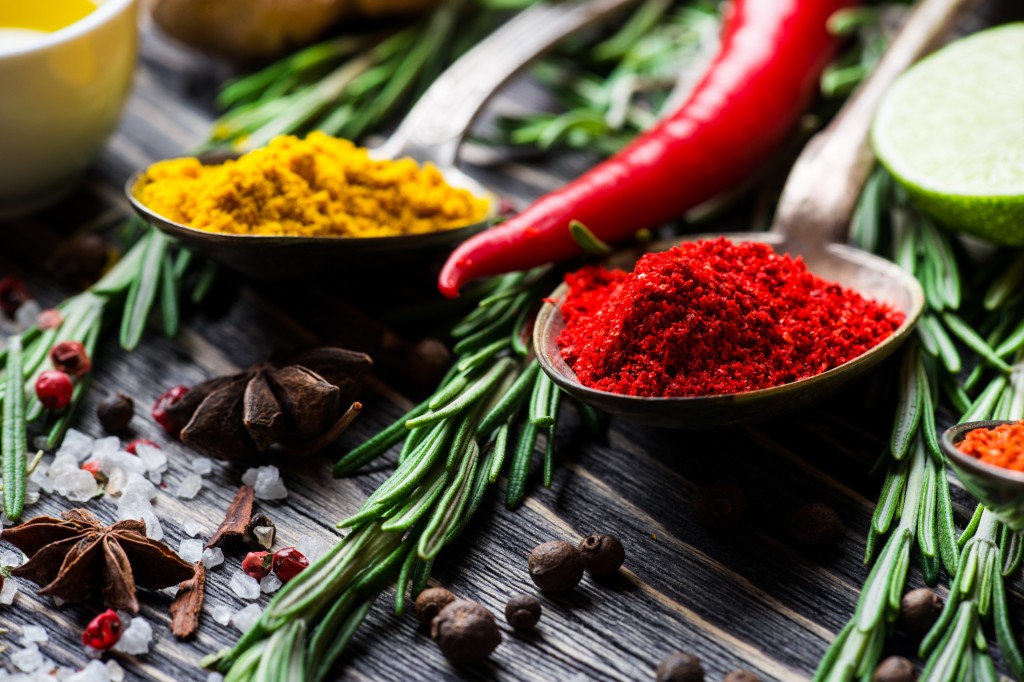- Make It Yourself Lavender Heart-Shaped Bath Bombs!
- 20 Things You Never Knew About “Down There”
- 12 Best Foods For Those Suffering From Arthritis Pain
- 12 Personal Hygiene Mistakes Almost Everyone Makes (Mom Never Told You About #4!)
- 15 Medicinal Plants And Herbs From The Cherokee People
- 12 Mind-Blowing Benefits Of Drinking Coconut Water During Pregnancy
- 12 Outstanding Winter Foods That Won’t Fatten You Up Like A Christmas Turkey
Saffron: The Magic Spice You Need To Be Eating More Of

Photo credit: bigstock.com
One of the most highly sought after and expensive spices in the world is saffron. This rare ingredient is derived from the “stigma,” or dried threads, of the crocus sativus flower. The benefits of saffron go beyond its pleasant taste; it contains many beneficial nutrients, which will be discussed in more detail below.
As mentioned above, saffron is made out of the pollen-covered stigma of the crocus sativus flower, which grows throughout the Mediterranean region, the Middle East, and India. Of course, one flower only contains three stigmas, so it takes quite a lot of flowers to produce a usable amount of the spice. It takes nearly 150 flowers to yield a mere 1 gram of saffron, and large quantities of saffron have been known to sell for over $1,000 per pound.
Saffron has traditionally been used as an ingredient in many dishes of the aforementioned regions, such as paella in Spain, risotto in Italy, and many types of dishes in Indian cuisine. It adds a golden yellow color to food, somewhat similar to turmeric. Saffron’s delicate taste and aroma conceal a nice assortment of beneficial compounds.
What Are the Health Benefits of Saffron? For thousands of years, saffron was used as a traditional folk medicine in places like Greece. Modern science has deconstructed the nutrients in saffron and revealed why ancient peoples were attracted to the health properties of this rare and highly sought spice.
1. Highly beneficial essential oils
Saffron contains highly beneficial essential oils, such as linalool, phenethenol, limonine, and many more which you’ve probably never heard of. The important thing to know is that they’re difficult to find, and they’re very good for you. One essential oil that stands out is called safranal. This oil is responsible for giving saffron its distinct taste.
Continue to Page 2

Photo credit: bigstock.com
2. Surprising assortment of vitamins and minerals
Saffron also offers a surprising assortment of vitamins and minerals. This exotic spice contains zinc, magnesium, copper, potassium, manganese, iron, and more. Saffron is a source of vitamin A, which helps maintain strong vision; B vitamins like niacin, riboflavin and folic acid; and vitamin C, which of course helps strengthen your immune system and ward off illness.
3. Benefits which saffron offers to the brain
Then there are the benefits which saffron offers to the brain. Physicians in Ancient Persia used saffron tea as a folk remedy for depression, and modern studies have produced findings that seem to confirm saffron’s depression-fighting properties.
A study published in the Journal of Integrative Medicine found that saffron supplementation was able to improve symptoms in adults living with major depressive disorder (MDD). Another 6-week study on older adults found that 30 milligrams of saffron per day was just as effective as Prozac for treating depression. This was a small study involving only 40 adults, but the results were promising enough that scientists are calling for a larger-scale study to be conducted. More research needs to be done, but saffron may serve as a potent alternative for people who don’t tolerate antidepressant medications very well. It is for these mood-boosting reasons that saffron is sometimes referred as the “sunshine spice.”
Continue to Page 3

Photo credit: bigstock.com
4. Plenty of antioxidants and beneficial compounds
There are also plenty of antioxidants and other beneficial compounds to be found in saffron. Oxidative stress on cells is what contributes to the aging process and is linked to many forms of disease.
Compounds like beta carotene, zeaxantan, lycopene and more help negate the effects of oxidation and reduce your chances of getting cancer. Due to the nutrients listed above, studies have shown saffron to be beneficial for lowering blood pressure and cholesterol, reducing premenstrual syndrome (PMS), and more.
5. Saffron Tea
One popular and tasty way to reap the benefits of this elusive spice is to prepare saffron tea. There are various ways to prepare saffron tea, but you don’t need to make things too complicated. Just add a few saffron threads to some hot water and allow it to steep as if it was a tea bag for eight to 10 minutes. Remove the threads and enjoy. You can also try combining it with other teas or with honey for a different taste, but try it on its own first to see how you like it.
READ ALSO: 7 Herbs and Spices That Can Treat Depression Naturally
As mentioned above, saffron is quite expensive, so buy it from a reputable retailer. If you see saffron that’s much cheaper than normal, be cautious, as sometimes dishonest companies will blend it with other spices to make more money. Shop around and read reviews until you find a good source. It’s been thousands of years since people began using saffron, and it hasn’t lost any of its popularity. Pick some up today so you can see what all the fuss is about.
References:
































